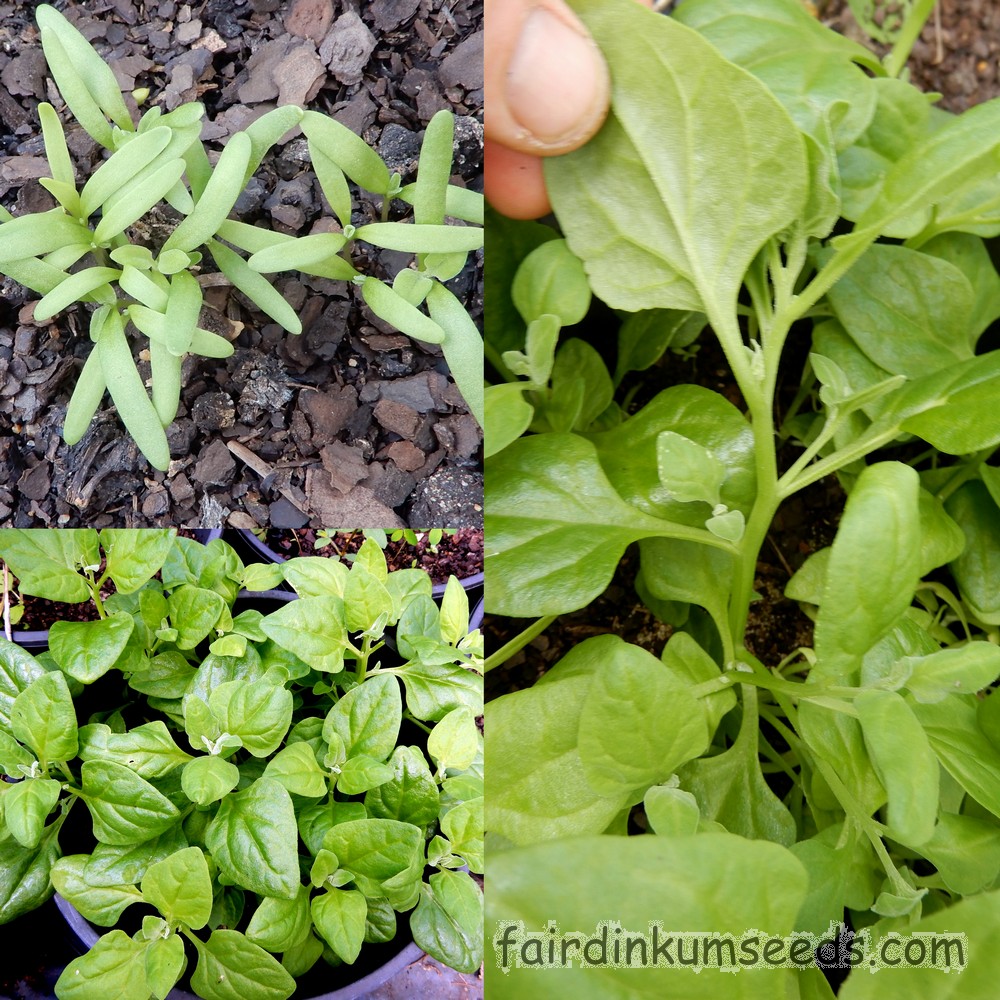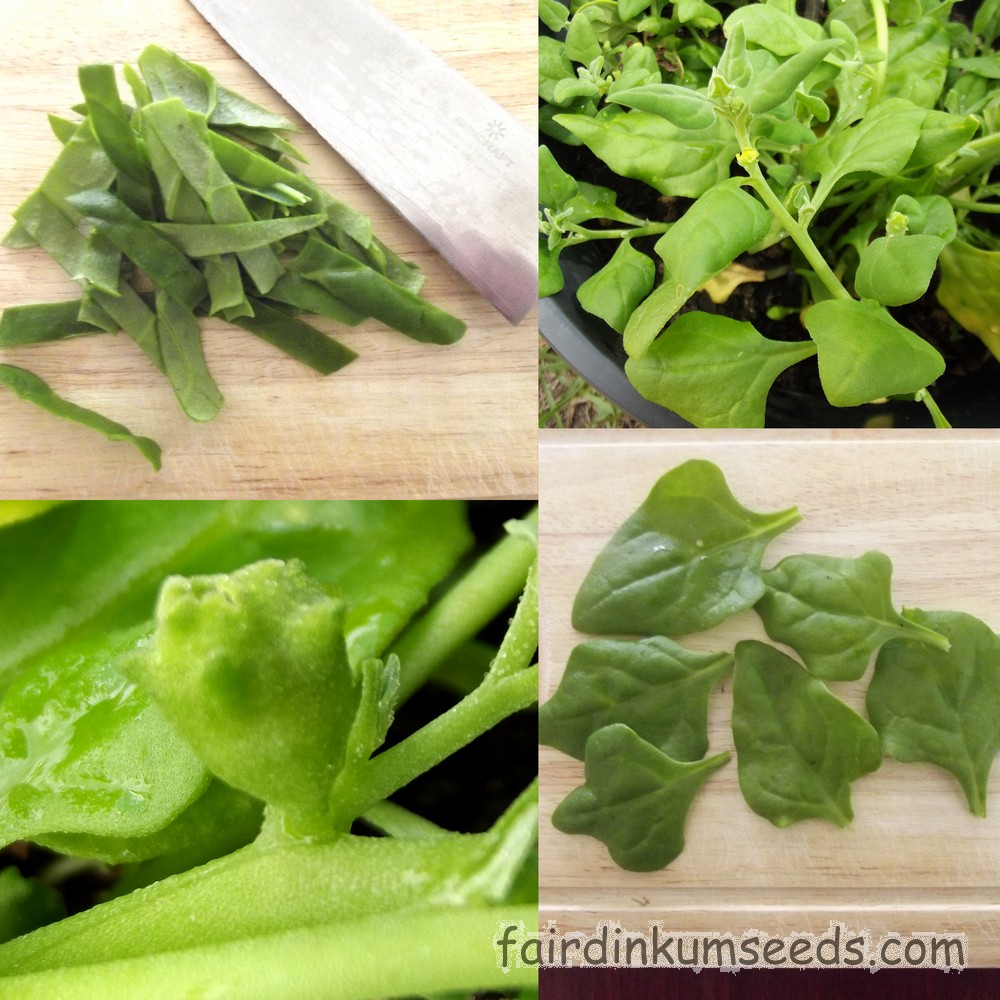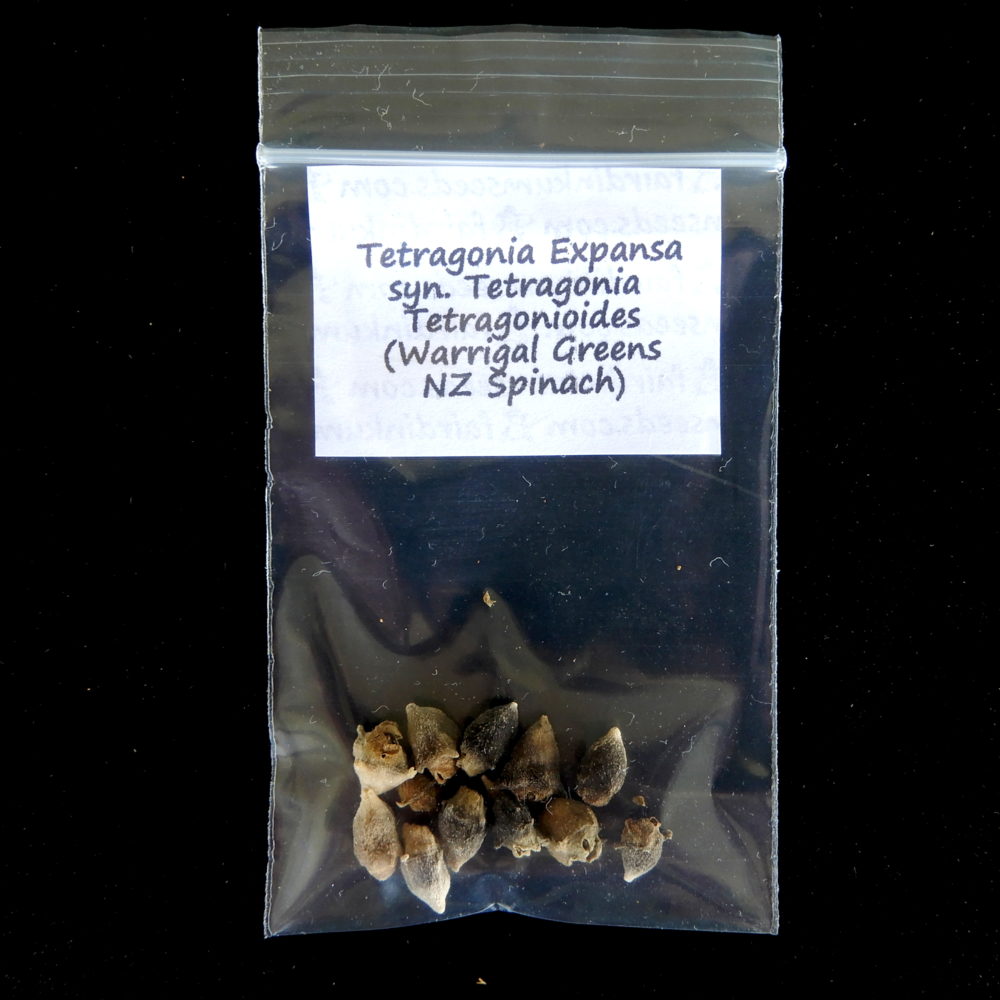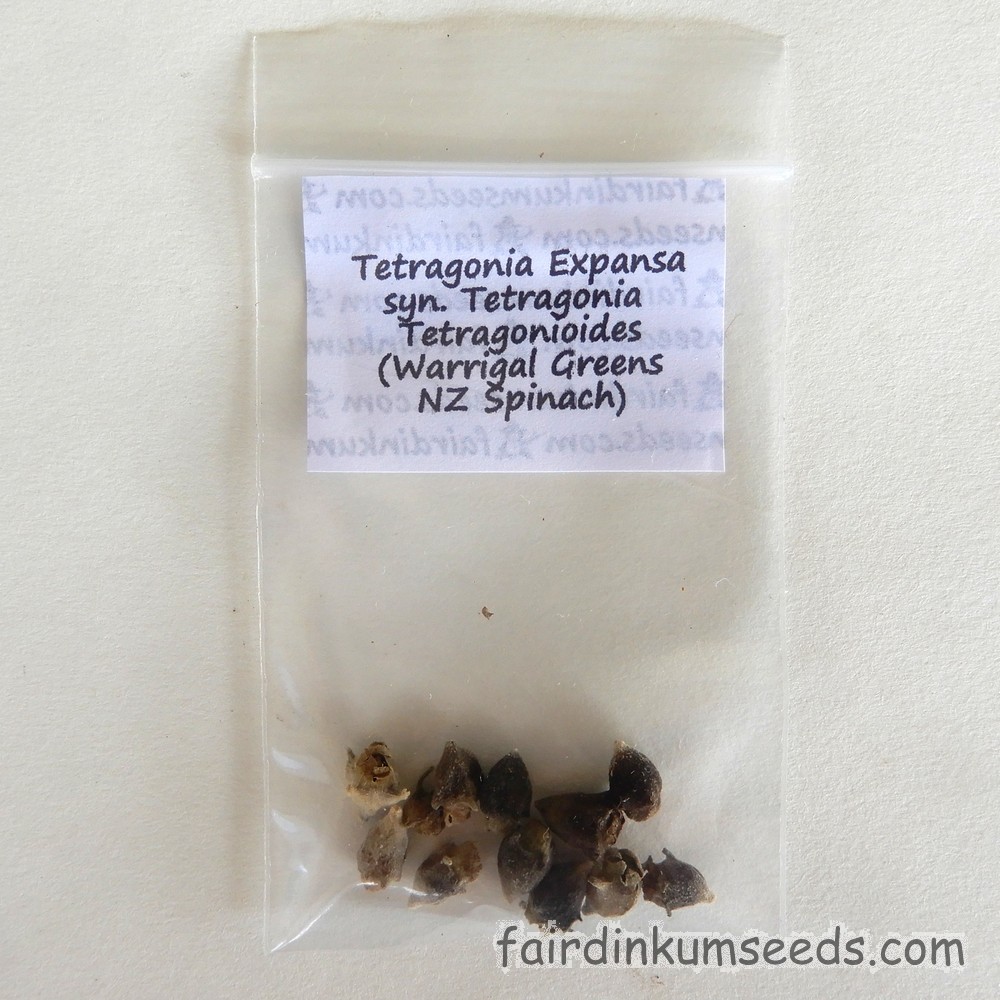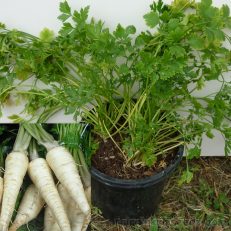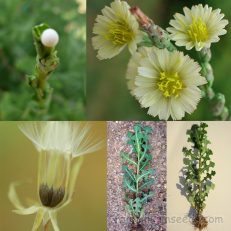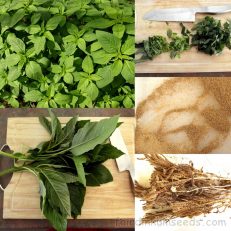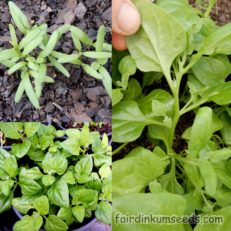Please read text!
Warrigal Greens NZ Spinach Tetragonia Tetragonoides Expansa Seeds
Packet of 10+ fresh home grown seeds!
Fantastic native vegetable that we use for a feed at least once a week, all year round here.
Delicious, and super easy to grow from cuttings and seeds, especially in the warmer months.
Keep the water up to them and you can’t really go wrong?
Whenever I start a new row of anything, I chuck a few of these guys in as well as a groundcover to hold the moisture and the topsoil and because if the roos and critters get under the nets, they will normally eat this fella first. It’s a sacrificial cover crop and a handy green vegetable all in one.
Saves me losing my more valuable plants, and as these guys propagate so easily, it doesn’t take long to replace the eaten ones.
Tetragonia tetragonioides(or previously T. expansa) is a leafy groundcover also known as New Zealand spinach, Warrigal greens, kōkihi (Māori language), sea spinach, Botany Bay spinach, tetragon and Cook’s cabbage. It is native to New Zealand, Australia, Japan, Chile and Argentina.
The species, rarely used by Māori or other indigenous people as a leaf vegetable, was first mentioned by Captain Cook. It was immediately picked, cooked, and pickled to help fight scurvy, and taken with the crew of the Endeavour. Its popularity started to spread when the explorer and botanist Joseph Banks took seeds back to Kew Gardens during the latter half of the 18th century. For two centuries, T. tetragonioides was the only cultivated vegetable to have originated from Australia and New Zealand.
The species prefers a moist environment for growth. The plant has a trailing habit, and will form a thick carpet on the ground or climb though other vegetation and hang downwards. The leaves of the plant are 3–15 cm long, triangular in shape, and bright green. The leaves are thick, and covered with tiny papillae that look like water drops on the top and bottom of the leaves. The flowers of the plant are yellow, and the fruit is a small, hard pod covered with small horns. The plant is a halophyte and grows well in saline ground.
Grows so easy that I’m often chuck a bit of the excess in with the chooks and guinea pigs as they love it too!
Wikipedia says the following and as I can’t say it any better I have just copied and pasted most of it here>
It is grown for the edible leaves, and can be used as food or as an ornamental and delicious ground cover. As some of its names signify, it has similar flavour and texture properties to spinach, and is cooked like spinach. Like spinach, it contains small amounts of oxalates; its medium to low levels of oxalates need to be removed by blanching the leaves in hot water for one minute, then rinsing in cold water before cooking. It can be found as an invasive plant in North and South America, and has been cultivated along the East Asian rim. It thrives in hot weather, and is considered an heirloom vegetable. Few insects will bother it, and even slugs and snails.
The thick, irregularly-shaped seeds should be planted just after the last spring frost. Before planting, the seeds should be soaked for 12 hours in cold water, or 3 hours in warm water. Seeds should be planted 5–10 mm (0.2–0.4 in) deep, and spaced 15–30 cm (5.9–12 in) apart. The seedlings will emerge in 10–20 days, and it will continue to produce greens through the summer.
Well there you go folks.
Another Aussie native well worth cultivating and promoting in my humble opinion.
Grown by us organically, no nasties, no chems, no problems!!!
